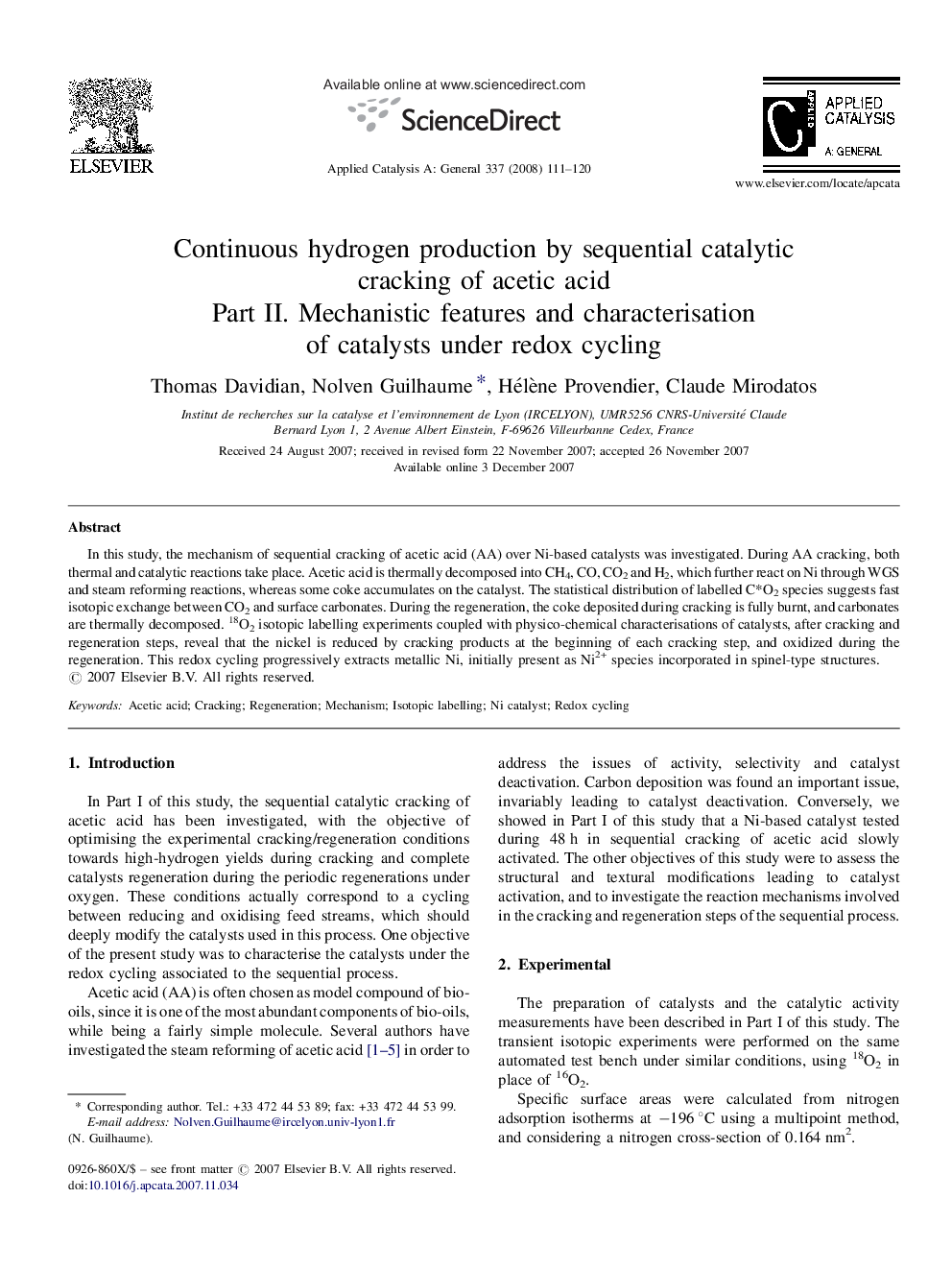| Article ID | Journal | Published Year | Pages | File Type |
|---|---|---|---|---|
| 43510 | Applied Catalysis A: General | 2008 | 10 Pages |
In this study, the mechanism of sequential cracking of acetic acid (AA) over Ni-based catalysts was investigated. During AA cracking, both thermal and catalytic reactions take place. Acetic acid is thermally decomposed into CH4, CO, CO2 and H2, which further react on Ni through WGS and steam reforming reactions, whereas some coke accumulates on the catalyst. The statistical distribution of labelled C*O2 species suggests fast isotopic exchange between CO2 and surface carbonates. During the regeneration, the coke deposited during cracking is fully burnt, and carbonates are thermally decomposed. 18O2 isotopic labelling experiments coupled with physico-chemical characterisations of catalysts, after cracking and regeneration steps, reveal that the nickel is reduced by cracking products at the beginning of each cracking step, and oxidized during the regeneration. This redox cycling progressively extracts metallic Ni, initially present as Ni2+ species incorporated in spinel-type structures.
Graphical abstractThe mechanism of sequential cracking of acetic acid (AA) over Ni-based catalysts was investigated using 18O2 isotopic labelling experiments. Both thermal and catalytic reactions take place during AA cracking. During the regeneration, the Ni is fully oxidized. Physico-chemical characterisations of catalysts after AA cracking and after regeneration under oxygen revealed important structural changes induced by the redox cycling. Figure optionsDownload full-size imageDownload as PowerPoint slide
